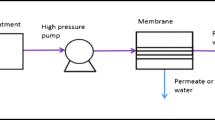Abstract
This paper proposes concepts and economic analysis of 9,300 TEU (Twenty-foot Equivalent Unit) trans-ocean container ship fueled by LNG, sailing between Asia and Europe, based on the design of existing container ship fueled by bunker oil. For a quantitative comparison, three projects complying with IMO Tier III NO x emission regulation are made: oil-fueled ship with selective catalystic reduction (SCR), LNG-fueled ship with low-speed diesel engine directly coupled to the propulsion system, and LNG-fueled ship with medium-speed diesel electrical propulsion system. Moreover, parameters for the economic analysis study are evaluated by the market research and the general information: initial shipbuilding cost, freight revenue, operation expenditure, and fuel cost. Economic analysis by discount cash flow method shows that the project of LNG low-speed diesel ship is more attractive investment than the project of the oil-fueled ship with SCR. Supposing that life time is 20 years, net present value of each LNG ship is larger than that of the oil-ship at the end of the projects. Moreover, refund time to payback initial cost for the LNG ship is shorter. This result is confirmed by the market price of LNG.









Similar content being viewed by others
Abbreviations
- D :
-
Depth
- DW:
-
Dead weight
- L :
-
Length
- M :
-
Cash flow of the project
- N :
-
Project life
- NPV:
-
Net present value
- P :
-
Initial cost
- R :
-
Operating cost
- S :
-
Residual value after project life end
- W :
-
Width
- i :
-
Discount rate
- b :
-
Freight revenue
- c:
-
Non-fuel
- f:
-
Fuel
- k :
-
Ordinal number of year since project start year
- pp:
-
Perpendiculars
- u:
-
40 % Concentration urea solution
References
Baumgart M et al (2010) LNG-fueled vessels in the Norwegian short-sea market: a cost-effective response to environmental regulation
Anna Lee Deal (2013) Liquefied natural gas as a marine fuel: a closer look as TOTE’s LNG containership projects, NEPI Working Paper
DNV et al (2011) Quantum 9000 Two-Stroke LNG
DNV (2010) Triality Taking the environmental and economic performance of VLCCs a great forward, Tanker Update No. 2 2010 special edition
Myers SC (1984) Finance theory and financial strategy. Interfaces 14(1):126–137
Stopford M (2009) Maritime economics 3rd edn.
Clarkson Research Services (2011) World Shipyard Monitor, Vol. 18, No. 8
Chang D et al(2008) Economic evaluation of propulsion systems for LNG carriers: a comparative life cycle cost approach, GASTECH 2008
IMO (1993) International Code for the Construction and Equipment of Ship Carrying Liquefied Gases in Bulk (IGC code)
IMO (2010) BLG 13/18, Interim Guidelines in Safety for Gas Fueled Engine Installation in Ships, (IGF Interim Code)
ABS (2011) Guide for propulsion and auxiliary systems for gas-fueled ships
Gerdsmeyer KD (2006) Economic design concept for small LNG carriers, GASTECH 2006
Adachi M et al (2012) LNG fuel tank in concept of trans-ocean container ship (in Japanese). In: Proceeding of JIME 82nd Annual Meeting, pp 39–40
EPA (2009) Proposal to designate an emission control area for nitrogen oxides, sulfur oxides and particulate matter. Technical Support Document, Chapter. 5 Costs, pp 21–33
Ocean Commerce Ltd (2011) International Transportation Handbook 2011 edition (in Japanese)
UNCTAD (1997–2010), Review of maritime transport
IEA (2012) Energy prices and taxes
BunkerIndex (2011) http://www.bunkerindex.com/prices/index.php
MOF Japan (2012) Trade Statistics of Japan, http://www.customs.go.jp/toukei/info/index.htm
IMF (2011) Primary commodity prices
Acknowledgments
This study was carried out based on our investigation study called “The feasibility study of Trans-ocean LNG Fueled Container Ship”, which was sponsored by JSTRA (Japan Ship Technology Research Association) and basically financed by the Nippon Foundation in the 2011 year’s support work called “Phase 2 Framework for Energy Efficiency Optimization of International Seaborne Trade “. We would like to thank both associations for their support.
Author information
Authors and Affiliations
Corresponding author
About this article
Cite this article
Adachi, M., Kosaka, H., Fukuda, T. et al. Economic analysis of trans-ocean LNG-fueled container ship. J Mar Sci Technol 19, 470–478 (2014). https://doi.org/10.1007/s00773-014-0262-5
Received:
Accepted:
Published:
Issue Date:
DOI: https://doi.org/10.1007/s00773-014-0262-5




